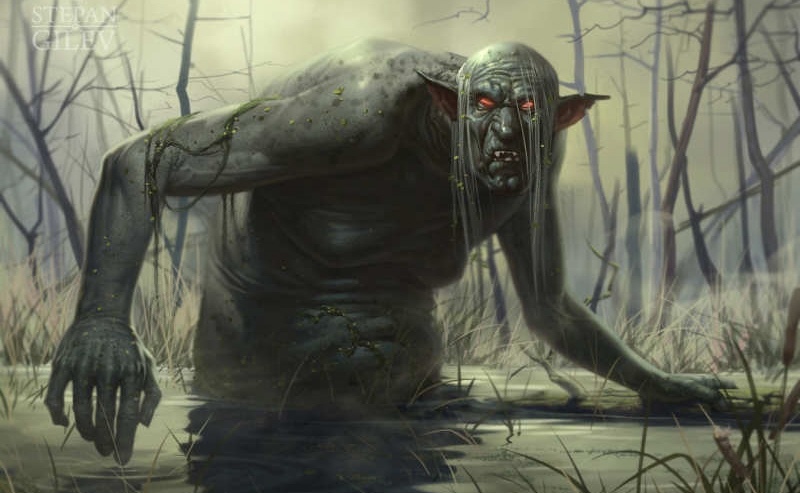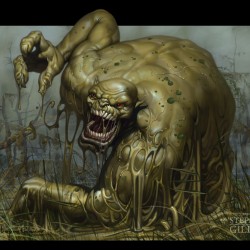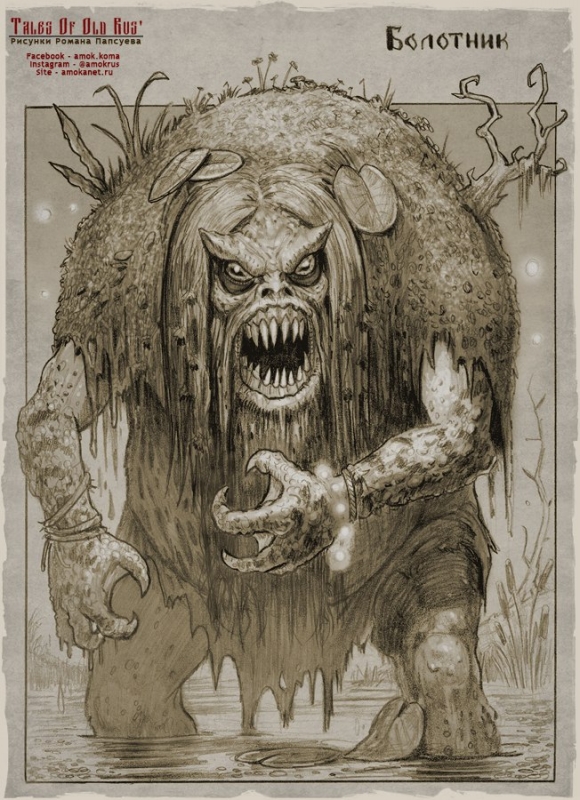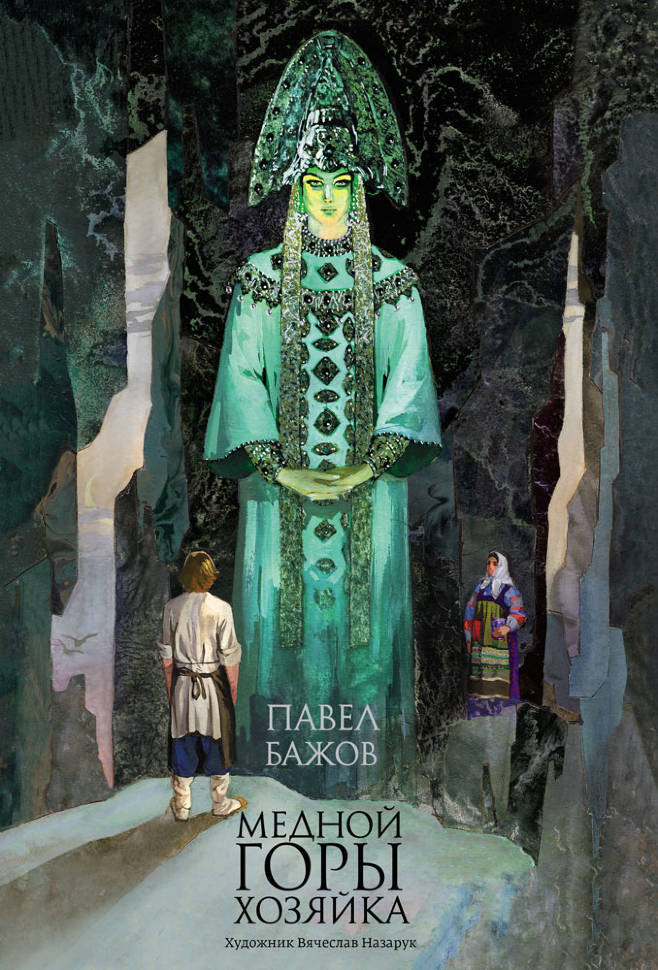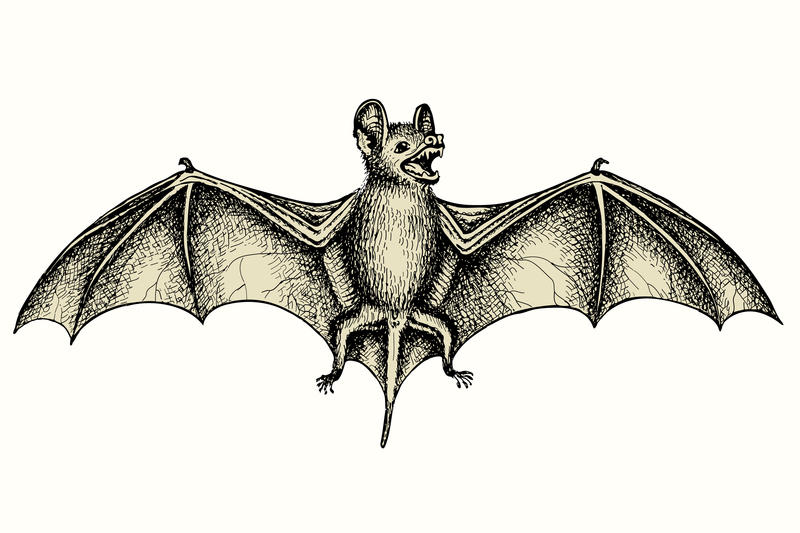https://en.wikipedia.org/wiki/Vodyanoy
Vodyanoy by Ivan Bilibin, 1934
V. Malyshev. Vodyanoy, 1910
In Slavic mythology, vodyanoy or vodyanoi (Russian: водяно́й, IPA: [vədʲɪˈnoj]; lit. '[he] from the water' or 'watery') is a male water spirit. Vodník (or in Germanized form hastrman) in Czech fairy tales is the same creature as the Wassermann or nix of German fairy tales.
Vodyanoy is said to appear as a naked old man with a frog-like face, greenish beard, and long hair, with his body covered in algae and muck, usually covered in black fish scales. He has webbed paws instead of hands, a fish's tail, and eyes that burn like red-hot coals. He usually rides along his river on a half-sunk log, making loud splashes. Consequently, he is often dubbed "grandfather" or "forefather" by the local people. Local drownings are said to be the work of the vodyanoy (or rusalkas).
When angered, the vodyanoy breaks dams, washes down water mills, and drowns people and animals. (Consequently, fishermen, millers, and also bee-keepers make sacrifices to appease him.) He would drag down people to his underwater dwelling to serve him as slaves.
In the Russian North, is believed that vodyanoys have a ruler. He is an old man, armed with a club. He can rise to the sky sitting on a black cloud and creating new rivers and lakes. His name is the Tsar Vodyanik, or the Vodyan Tsar[1].

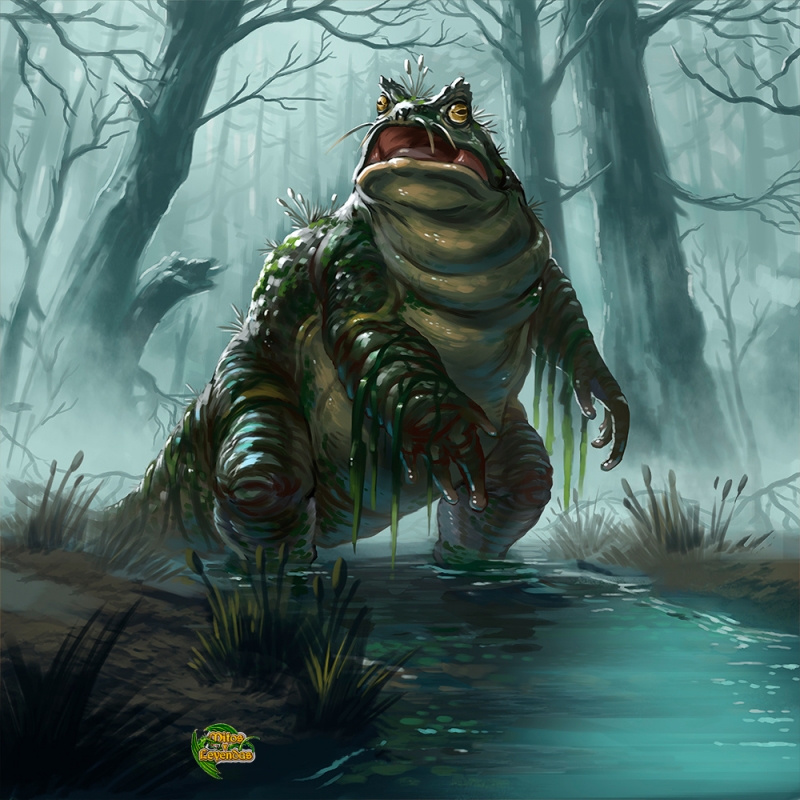
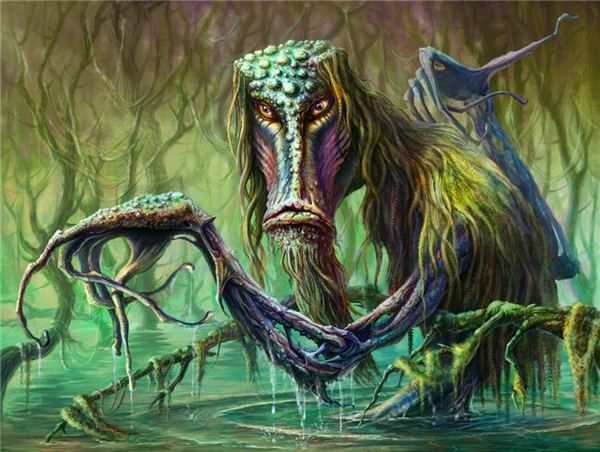

Minor mobs in raid could be Mermaids

also there can be Nixies

also can be Draugen - In the depths of the sea, lives the draug or the Strandvasker. The draug is the spirit of a person who died at sea. He sails through the sea in half a boat. If someone happens to see a draug, they are in mortal danger unless they race the draug and win. The word Strandvaskere is found in Danish, Swedish and Norwegian. It refers to a drowned person washing up on the shore.

